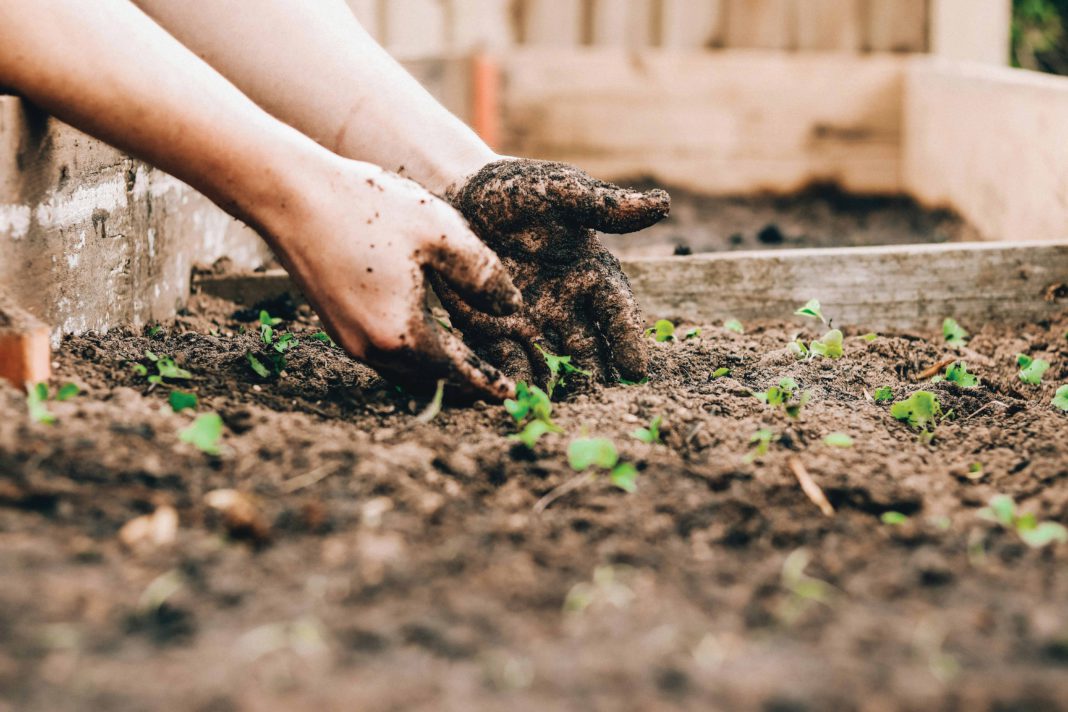Gardening is an art. And like any form of creative expression, the beginning can be a bit of a gamble. At the start of a garden project, one doesn’t know if they’ll end up with the green thumb equivalent of the Mona Lisa or perhaps more of a preschool finger painting.
Here in Marin, the temperate climate and stunning landscapes give gardeners an edge. But even in these ideal conditions, gardening can feel like an ongoing Q&A session—the gardener asks a million and one questions, and the garden remains decidedly silent.
The garden’s answers don’t come in words—or in any language, for that matter—but in the subtle cues of wilted leaves, sudden blooms or a plant that seems to thrive against all odds. And the challenge lies in learning to listen and decipher what the garden needs.
So, how does one learn to speak the language of the flowers and turn those gardening misses into hits and wins?
The first and hardest lesson is accepting that gardening is not about crafting a perfect Eden so much as taking a bite and making a big ol’ possibly painful and definitely imperfect leap of faith. It hurts to say, but perfection simply doesn’t exist … especially when it comes to nature, which, by definition, refuses to be entirely tamed. What’s beautiful is not necessarily flawless; in fact, perfection in gardening often leads to frustration rather than fulfillment.
Instead of trying to replicate a pristine, magazine-ready garden, one should focus instead on creating something that satisfies four personal metrics: creativity, utility, sustainability and sheer whimsy.
Whether one’s dream garden includes a peaceful water feature, a practical herb garden or a vibrant collection of pollinator-friendly flowers, gardening is a space where creativity and practicality can coexist. It’s a place where one can indulge in both the beauty of nature and the usefulness of plants that serve everyday needs for tasty meals and even handy, holistic medicines.
When it comes to space, the size of the garden matters less than how one chooses to use it. Whether tending a wild, sprawling ranch in West Marin or cultivating a tiny balcony on a Sausalito houseboat, there’s always room to get creative.
In fact, smaller spaces often foster greater ingenuity, inspiring gardeners to think vertically, use hanging pots or even experiment with hydroponic setups. The secret to any garden, big or small, is first and foremost the size of one’s imagination.
Imagine, for instance, a garden that isn’t just for meeting the enjoyment and needs of people, but of the local wildlife, too. With only a few additions, any garden can turn into a sanctuary for all sorts of critters, offering a little slice of refuge for birds, bees and bugs. By adding a birdbath or planting pollinator-friendly flowers, a garden can help support the ecosystem in ways that go beyond simple aesthetics.
A well-placed water feature, for instance, can serve as both a tranquil spot for the gardener and a valuable resource for wildlife. Pollinators will flock to the blooms, while birds can drink and bathe alongside the bees in a bath. Even something as small as leaving a tiny patch of garden untended, allowing plants to grow wild, can create a haven for insects and a thriving microhabitat within the larger garden.
Gardening also offers a chance to collaborate with nature, not just decorate it. For those ready to take it a step further, animals can be brought into the fold. Adding chickens or ducks to the garden can provide more than just entertainment; they can also help keep things in balance.
Chickens and ducks, for example, are natural pest controllers—these amusing fowl are great at feasting on snails, caterpillars and other garden pests. They also contribute to the compost pile by breaking down food scraps into nutrient-rich organic matter.
Plus, poultry like chickens and ducks offer the bonus of fresh eggs, adding another layer of reward to the gardening experience. While turning a garden into a small farm isn’t necessary, a few carefully chosen animals can make the space work harder for both the gardener and the environment.
Speaking of gardening smarter instead of harder, those who want to make the most of their space should pay attention to the land’s forage. Marin is abundant with wild edibles, from wood blewit mushrooms to miner’s lettuce, fennel, yerba buena, sourgrass and tons of others. These naturally occurring greens offer a unique way to supplement a home garden.
Rather than purchasing specialty herbs or vegetables, foragers can harvest plants that grow naturally in the area, reducing reliance on cultivated crops. Not only does foraging add an extra layer of sustainability to gardening, but it also fosters a deeper connection to the land, as it encourages gardeners to work with the natural landscape of California’s Central Coast rather than against it.
After all, gardening in California brings its own set of challenges … water conservation, for instance. While the Bay Area is greener than many other regions, drought and water conservation remain a concern. Fortunately, it’s entirely possible to create a beautiful, thriving garden while being mindful of water usage.
Drought-tolerant plants, such as succulents and native grasses, can flourish even in dry conditions, reducing the need for constant watering. Moreover, replacing water-guzzling lawns with rock gardens or low-water plantings is a simple yet effective way to reduce the environmental impact of gardening. A sustainable garden doesn’t have to lack beauty—in fact, a creative sustainability-inspired garden can bring a uniquely stunning edge to a space while saving on precious resources.
Speaking of challenges: The greatest challenge a Marin gardener may face is the dreaded invasive broom. This fast-growing, aggressive plant can quickly take over a garden or open landscape, crowding out native species and disrupting the local ecosystem. The best way to handle broom is to dig it up by the roots. Although it’s a tedious task, removing broom is crucial to maintaining a healthy garden that supports local biodiversity.
At the heart of all this is the idea that gardening is about balance and finding harmony between creativity and practicality, between working with nature and maintaining a space that serves personal needs. Gardening doesn’t have to be complicated or stressful; it’s a rewarding journey that can yield not just a thriving garden, but a deeper connection to the environment.
And the best gardens are the ones that evolve imperfectly over time, just like the gardeners who create them. So, while perfection may remain elusive, satisfaction is found in the journey—and the garden will always reflect the care and creativity invested in it.
Whether a green thumb creates a stunning masterpiece of a garden or turns this spring into an exercise in patience, the act of gardening offers something far more valuable than fresh produce: It offers a chance to try, fail, learn and grow along the way. The process itself is a journey, filled with equal parts success and failure (and no small amount of self-deprecating laughter and a little bit of dirt too).









Great article!!! Love your style Isabella!